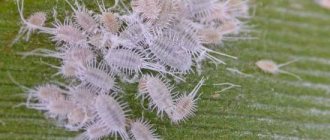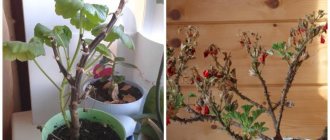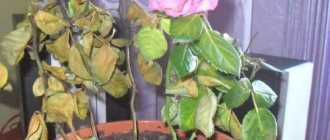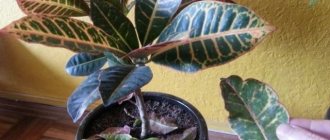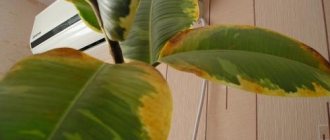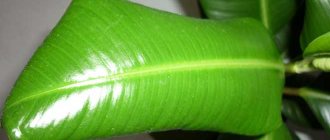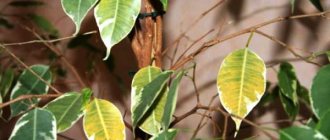Ficus is a fairly popular indoor plant. There are more than 20 types of ficus that are grown at home. All types of these plants produce a lot of oxygen, are easy to reproduce and can be shaped, which is why they are loved. Sometimes ficus leaves begin to turn yellow and fall off. Most often this happens in the autumn-winter period. Why ficus leaves turn yellow and what to do to restore its health, we will tell you in the article.
Why do leaves turn yellow and what to do about it 1.1. Why does the rubber-bearing ficus change color 1.2. Causes of yellowing of Ficus Benjamin 1.3. Why do the lower leaf blades suffer and how to help the plant 1.4. Yellowing of the tips of the ficus plates and its elimination 1.5. What to do if the “pet” lost its green color in the fall of 1.6. How to help a yellowed plant in winter 2. Prevention methods
Photo by ru.depositphotos: If the ficus plates turn yellow, you need to take immediate action.
| Reference. The most common is the rubber ficus. It can often be found on grandmothers' windowsills. Its leaves are large, glossy, and have a beautiful rich green hue. Recently, ficus trees with small foliage have been gaining momentum: Benjamina, dwarf, Bengal and others. |
Ficus leaves turn yellow: reasons
Diseases of indoor plants can be perceived very acutely by gardeners and raise a lot of questions. But yellowing of the ficus does not always indicate a problem, insufficient care or disease. At one time, usually two or three leaves turn yellow and fall off, but in their place fresh, young, green leaves grow. But if you notice that the ficus has suddenly turned yellow, the problem affects all leaves, you only have yourself to blame for the disease of the houseplant.
Ficus leaves turn yellow, reasons:
- Incorrect transplant. Perhaps the pot is large, so the root system does not have time to fill all the soil.
- Reduced temperature. Ficus is a heat-loving plant, so in no case is it recommended to lower the temperature below 18 degrees. If the room is quite cold in winter, be sure to use heaters. But under no circumstances place the plant near a heating radiator.
- Lack of minerals and nutrients. Ficuses, like any other plants, need fertilizers, especially if they are transplanted to a new location. Follow the watering schedule, because in conditions of lack of water the plant can quickly wither . But not only a lack of water, but also its excessive amount causes yellowing of the foliage. Even if you flooded the plant with a large amount of water once, there is a risk of its death.
- Diseases. During transplantation, pay attention to the roots and stems to see if there are any suspicious deposits or insects on them. Often the causes of darkening of leaves are pests, bacteria and viruses.
Healthy plant
Exposure to dry air
Ficus plants need air of moderate humidity. To prevent its leaves from turning yellow and to avoid a large layer of dust on them, you must:
- spray the tree daily;
- once a month take a warm shower in the bath;
- Periodically wipe the leaves from dust.
In the room where the ficus is located, it is recommended to use a humidifier. This will allow you to maintain optimal conditions for stable and rapid growth.
Information. Rapid growth is considered very relative. In indoor conditions, the plant can reach a height of 1.5 meters in about 6 years.
Why do ficus leaves turn yellow in summer?
It is recommended to remove the plant from the pot, cut off all damaged roots, and replant it in new soil. Do not use old soil for replanting other plants. It must be thrown away, because mold spores or some other pathogenic microorganisms can multiply in it. Other plants can grow in this soil, but will also become diseased.
Why do ficus leaves turn yellow in summer?
- Remove the plants from the sunny side, since under direct sunlight the ficus can also darken and dry out.
- Sometimes it is very difficult to determine when a ficus needs watering. The plant needs a lot of moisture, but if you flood the crop with water even once, the roots may begin to rot, mold and pathogens may multiply, leading to the death of the plant. That is why it is necessary to follow the watering regime.
- You can check the lack of moisture in the following way. To do this, take a dry stick, a match or a wooden skewer will do, and place it in the soil. You need to leave it in the ground for a few minutes and then pull it out. If the stick is completely dry, you need to water the plants.
- If you are guilty of excessive amounts of moisture, then it is better to limit watering for two weeks, reducing it to a minimum. Accordingly, at this time it is necessary to water the plant in small quantities.
Yellowing
Why do ficus leaves turn yellow and fall off after fertilizing?
Why do ficus leaves turn yellow and fall off after fertilizing? With a deficiency or excessive amount of mineral supplements, not only the color, but also the shape of the foliage changes. They may dry out around the edges but be green in the center.
Symptoms of micronutrient deficiency:
- The plant falls and sheds its leaves mainly in the lower part. When you try to bend the stem, it breaks off easily. Excessive fragility indicates a deficiency of certain microelements.
- Insufficient development of the root system. If during transplantation of the crop you noticed thin and small roots, then the plant is not nourished enough. It needs feeding.
- If pale, yellow spots appear on the sheets. Not only a lack, but also an excess of fertilizers affects the condition of the plant. Yellow foliage may also indicate over-fertilization of the crop. However, in this case, not only yellow, but also brown spots appear. The leaves do not turn yellow, but immediately wither.
Spots on leaves
Shchitovka
Does the ficus have dots on its leaves? If these are convex small dots on the back side of the leaf that appear on some parts of the stem, then this is a scale parasite that feeds on the sap of the plant, and it gradually begins to die.
The scale leaves behind a discharge, and this is the soil for the development of sooty fungus, which has already been described above. What to do? How to get rid of the parasite?
- Wash the foliage and stem well with soapy water.
- Dry and treat with Actellik.
- The procedure is repeated three times every seven days.
What is the disease if the leaves of a ficus tree turn yellow and fall off?
Ficus is a plant that does not often get sick, but if not cared for properly, diseases can occur. Among the most common are the following.
What is the disease if the leaves of a ficus turn yellow and fall off:
- Gray rot. Brownish-yellow and gray spots appear on the leaves. In this case, the leaves do not turn yellow from the tips. The first manifestations of the disease appear in the center. Over time, the leaves dry out and fall off.
- Shield . This is a pest that sucks beneficial juices from the crop. Yellowish, brown spots appear on the leaves. Please note that there may be sticky spots on the back of the leaves, which can cause the crop to dry out.
- Spider mite . In this case, the plant may turn yellow, but a thin layer of cobwebs or film is observed on the stems. The plant withers and curls. This occurs on the back side of the leaf.
The leaves are falling
Botrytis or gray mold
This disease appears on those plants that are in hot, unventilated areas with high humidity levels. Lack of drainage in the soil is another cause of this disease.
The disease manifests itself as follows: a gray coating appears on the stem and leaves; if the plant is shaken, dust will fly off it. Then the leaves begin to curl, darken, dry out and fall off. If measures are not taken, the ficus will quickly die. What to do?
- Remove all damaged areas of the plant, wipe the rest with a solution: a glass of wood ash and chalk, a teaspoon of copper sulfate in a bucket of water. This is with a minor defeat. If it is severe, you will need a fungicide, for example Fitosporin-M.
- Ventilate the room regularly, do not allow moist air to stagnate.
- Stabilize watering.
Ficus leaves are turning yellow - what to do?
It is necessary to use prevention, as well as carefully care for the plant. Be sure to monitor the temperature and do not allow it to fluctuate. Both a decrease and an increase in temperature can affect the condition of the crop.
Ficus leaves are turning yellow, what to do:
- If the plants have lost a large number of leaves, an urgent transplant into new soil is necessary. Pruning, watering or additional feeding does not solve anything. Mold spores, or pests, live in the soil in which the plant is located. It is recommended to completely dig the plant out of the pot and replant it in new soil.
- Before placing the crop in new soil, it is best to wash the roots with a weak solution of potassium permanganate. This will kill mold spores, as well as bacteria and viruses that are on the roots.
- If you see that the roots are slippery or have an unpleasant smell, be sure to cut them with scissors. Treat the tips with a special product that improves rooting and promotes the survival of the crop in a new place.
Bonsai
Nematodes
Externally, the disease manifests itself only by yellowing and falling leaves, but the very reason for this lies in the roots. Nematodes are small spherical growths on the roots of ficus that release toxins, they poison the plant, leading to slow and painful death.
Fighting methods:
- Remove the ficus from the pot, which can be disposed of immediately along with the soil.
- Rinse the roots, then soak them in insecticide for three hours.
- Plant the ficus in new, oven-roasted soil.
Why do ficus leaves turn yellow and fall off in winter?
Winter time is a period when a large number of plants go into hibernation. This does not mean that they wither or dry out. But the crops are at rest, and the flow of juice inside the stems and leaves slows down. This often happens with ficus in winter.
Why do ficus leaves turn yellow and fall off in winter:
- There is no need to worry, especially if the temperature outside has dropped. Be sure to monitor the temperature and increase it if necessary. Ficus is a plant that cannot be placed on the veranda or balcony. The crop is not intended for the winter garden, as it does not tolerate cold air or temperature drops below 18 degrees.
- In winter, the plant may be located near heating radiators, which dries out the soil and can cause a lack of fluid and moisture. Therefore, water the ficus twice a week, but not very much. Replace additional watering by spraying the foliage and stems with a spray bottle. Once every 3 weeks, add mineral supplements and fertilizers to the soil in which the ficus grows.
- Yellowing at the bottom indicates a seasonal change of leaves and the rapid growth of new elements on the stem. Most likely, new leaves will appear over time. However, if there are more yellow leaves below, it makes sense to think about pests and rot. First of all, when the roots are damaged, the lower leaves begin to change color; over time, the disease spreads to the top of the crop.
Leaves are drying
When should you not worry?
You don't always have to worry about yellow leaves. This is normal in several cases:
- Buying a tree and changing location. He needs some time to get used to the new conditions.
- Transfer. This is stressful for the tree, so it will shed its leaves. However, the leaf fall will not last long. Usually the tree sheds more than 3-5 leaves.
- Winter. During this period, the plant may lose some leaves. Don't worry, this is a natural process.
Under other circumstances, it makes sense to analyze the situation to understand why the ficus turns yellow.
Why do Ficus Benjamin leaves turn yellow and fall off?
Ficus benjamina is an unpretentious plant, this does not mean that it does not require care. There is a change in color that occurs immediately after the acquisition of the culture. The fact is that in a store or warehouse, constant temperature and humidity are maintained.
Why do Ficus Benjamin leaves turn yellow and fall off:
- Features of care at home may differ, and the plant reacts sharply to the change.
- It is best to purchase a new Ficus Benjamin in the summer, as at this time it better adapts to environmental conditions.
- Under no circumstances should you replant it immediately after purchasing a plant.
Stains
In the spring, the lower leaves of the ficus turn yellow: reasons
Don’t be surprised if in the spring you see falling, yellowing ficus leaves from below.
In the spring, the lower leaves of the ficus turn yellow, reasons:
- This is normal since leaf change begins at the bottom of the plant. The transition phase lasts several weeks.
- At the initial stage, the lower leaves change color, then they fall off, the stem becomes rough, hard, hard, and the plant stretches upward. At the very top a large number of new young and bright green leaves appear.
- This is due to the fact that in spring the amount of juice increases and its circulation within the stems increases. This provokes the change of leaves, their new growth.
Healthy plant
Sooty mushroom
Are ficus leaves curling? Most likely, he was struck by a sooty fungus. The disease is also manifested by the presence of a black coating on the foliage of the plant. The culprit of the infection is insects (more precisely, their excretions). How to treat ficus leaves?
- Severely affected foliage should be removed and destroyed. Treat all other areas (not damaged or slightly damaged) with a strong soap solution (it is advisable to use real laundry soap).
- The stem and root system of the ficus must be treated with fungicides.
Why do the leaves of rubber ficus turn yellow and fall off?
In winter, the rubber-bearing ficus needs additional moistening of the leaves and stems using a sprayer. The plant suffers greatly from excessive waterlogging.
Why do the leaves of rubber ficus turn yellow and fall off:
- This is often observed in winter, in conditions of low temperature and a lot of moisture. Rubber-bearing ficus is one of the most heat-loving plant species, so the optimal temperature in the room is 20-23 degrees.
- A maximum increase of up to 28 degrees is allowed. If one or two leaves have fallen from below, do not worry or worry. But if you notice that the leaves change color and fall off constantly, their number increases, and the stem gradually becomes bald, you need to urgently sound the alarm.
- It is necessary to transplant the plant into new soil, and avoid excessive waterlogging of the substrate.
Update
The leaves of the ficus began to turn yellow and fall off after transplantation - is this normal?
Houseplants experience stress during a move. Therefore, ask the store in detail about the conditions in which the plant should be kept.
Why did the ficus leaves turn yellow and fall off after transplantation?
- Many people believe that if you change the environmental conditions of the ficus, it will immediately begin to grow better.
- This is the main mistake, since immediately after transplantation the plant quickly withers, dries out, its leaves turn yellow, fall off and the plant dies. It's better to wait about six months.
- Often the death of leaves is a physiological process, because once every 2-3 years the leaves change, but this does not happen to the entire plant, but only to a few of its elements.
A lot of interesting information about plants can be found in the articles on our website:
Ficus: what does this flower mean for home and office, what does it symbolize?
How to make a bonsai tree from ficus benjamina
Ficus: varieties, photos, diseases and home care
Magical herbs and plants: list, methods of use in magic
Iodine in the garden: application - tips for summer residents



